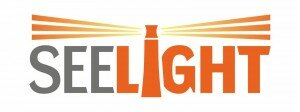See Light Report Booklet: Elements and practices of labour inclusion of disadvantaged groups.
Report Booklet available in
English
See Light Summary Booklet: Elements and practices of labour inclusion of disadvantaged groups.
See Light Summary Booklet available in several languages:
Czech English Italian Lithuanian and Spanish
Synopsis of documents:
The project See Light, “Social Economy and Entrepreneurship for the Labour Integration
of Groups Hit by Troubles”, funded by the European Grundtvig programme, has the
objective of reinforcing work insertion strategies and methodologies for disadvantaged
groups and increasing competences and skills of the operators active in the field of work
and social insertion. Its underlying vision is that social economy is a great source of social
innovation and can play a key role in combating poverty as well as promoting inclusion,
cohesion and growth. It is explained in articles
https://writingleader.com/journal-article-critique/
See Light therefore focuses on social entrepreneurship as a tool for inclusion and labour
integration of marginalized groups, such as long-term unemployed, homeless people,
immigrants, refugees and asylum seekers, people with physical disabilities, people with
mental health issues, Roma people, former detainees and drug addicts.
The access to the labour market is more difficult or sometimes impossible for these people,
who often present with multiple issues (e.g. lack of housing, lack or no skills, longterm
unemployment, physical and/or mental problems, criminal records, etc.). Therefore
it is very important to develop solutions that are effective and tailored to their needs,
leading to a sustainable inclusion into society.
The See Light project assumes that social entrepreneurship can play a key role in this
respect and in this particular moment of serious economic crisis, high unemployment
rates, increasing poverty rates and shrinking public resources, the contribution of social
economy and private organisations to cohesion and growth is more important than ever.
This sector can in fact have anti-cyclical function and can valorise the territorial economic,
social, relational and human resources.
The economic and social significance of the social economy is recognized more and more
within the European Union. The Commission believes that social businesses are a great
source of social innovation and play a key role in fighting against poverty as well as promoting
cohesion and growth.
The experience and level of development of the social economy sector as a means for
employing disadvantaged people varies from one country to another. l Integration and
education of disadvantaged adults requires specific tools, methods and knowledge. This
project allowed us to share good practices and methods already tested by others, addressing
a variety of initiatives dedicated to different categories of disadvantage.
The project, involved partners from 6 different countries (Czech Republic, Denmark, Italy,
Lithuania, Spain and the UK) and with different experiences in the field of social economy.
Partner Project visited successful organisations, social enterprises, services and initiatives
addressing disadvantaged people in their respective countries and Partners received training
about social economy legislation. They exchanged best practices of social entrepreneurship
as a tool for labour integration of marginalized groups and discussed challenges, development
strategies and innovative methodologies about the management of social enterprises.
The result of our experience is presented in in the booklet “Elements and practices of
labour inclusion of disadvantaged groups”, summarised in this document.
The booklet contains the outcomes of the See Light learning process on social economy,
with a chapter presenting a brief overview on the welfare state systems in partner countries,
providing the framework to better understand labour inclusion policies, projects
and initiatives, a chapter introducing the concept of social economy, describing its main
features in the European Union, and a chapter illustrating the main characteristics of
the social economy, as well as its economic and social impact, in the See Light partner
countries. Finally, the document presents a selection of the best practices in the field of
labour and social inclusion identified by project partners.
Here you can read a brief abstract of such practices. In the booklet you can find a detailed
description of their activities, methodology, impact, source of funding, strengths
and weaknesses, as well as their individual contact information.


